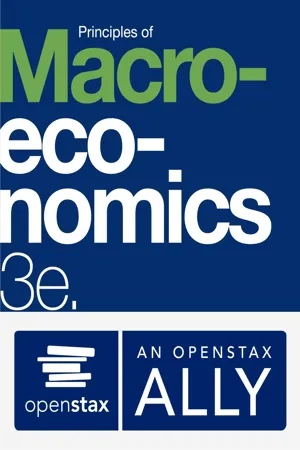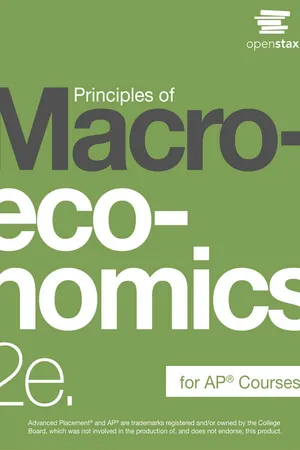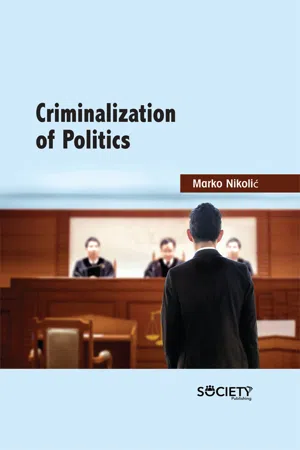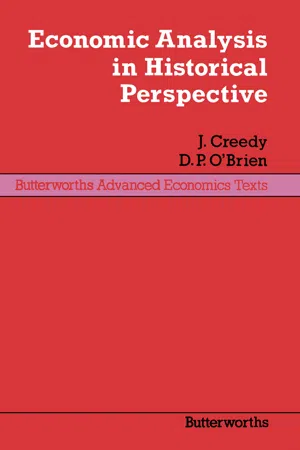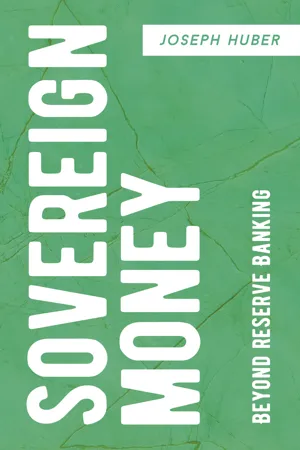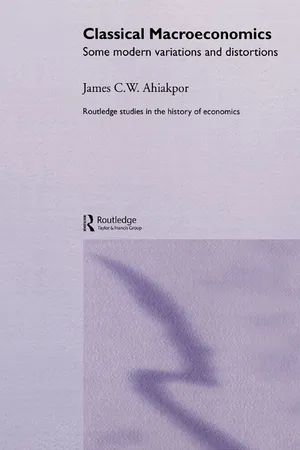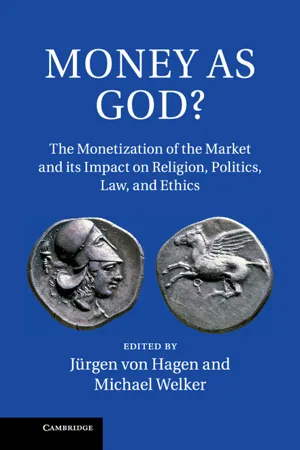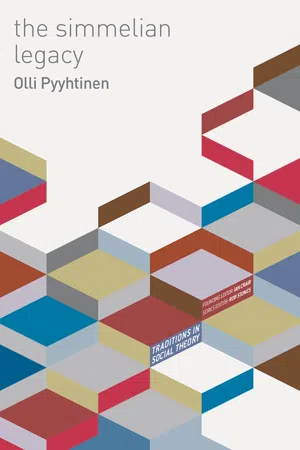Economics
Definition of Money
Money refers to any widely accepted medium of exchange, such as coins, banknotes, or digital currency, that is used to facilitate transactions and store value. It serves as a unit of account, a store of value, and a standard of deferred payment. In economics, money plays a crucial role in the functioning of modern economies by enabling the exchange of goods and services.
Written by Perlego with AI-assistance
Related key terms
1 of 5
11 Key excerpts on "Definition of Money"
- eBook - PDF
Monetary Economics
Theories, Evidence and Policy
- David G. Pierce, Peter J. Tysome(Authors)
- 2014(Publication Date)
- Butterworth-Heinemann(Publisher)
The functions, advantages and defínitions of money The major part of this book is concerned with the role of money in the workings of the macroeconomy, i.e. the relationships that are thought to exist between the stock of money and such macroeconomic variables as the level of, and rates of change of, unemployment, interest rates and prices. As a prehminary to these matters, this first chapter will consider the very basic issues of what money is and why we have it at all. We begin by setting out the traditional functions of money. We then look at the nature of a monetary economy and the advantages to be derived from using money. Next we consider some of the various theoretical and empirical definitions of money which have been suggested by economists, and look at the problems involved in trying to enumerate all those assets which are embraced by the definitions. Finally, we set out the official definitions of money that are employed in the United Kingdom. The functions of money The word 'money', as used in economics, has two quite distinct meanings. Firstly, it has an abstract meaning in that it is the unit of account or the measure of exchange value. This simply means that money is a sort of common denominator, in terms of which the exchange value of all other goods and services can be expressed. Money in this sense is simply a unit of measurement, denoting the value in exchange of all goods and services, just as, for example, metres denote length, ohms give electrical resistance, and degrees centigrade give temperature. The use of a unit of account greatly reduces the number of exchange ratios between goods and services. With η commodities, one of which is acting as a unit of account, there will need to be only n-l rates of exchange. Without a unit of account, however, there will be V2n{n-) separate rates of exchange. - G.C. Harcourt(Author)
- 2019(Publication Date)
- Routledge(Publisher)
7 The Role, Functions and Definition of Money* C. A. E. Goodhart BANK OF ENGLAND I DEFINITION Money can be and has been defined in many ways. For statistical purposes the stock of money is often defined in terms of certain clearly distinguishable, but analytically arbitrary, 1 institutional dividing lines. Since the dividing line between monetary and non-monetary assets is, perhaps, arbitrary, (e.g., whether or not term deposits at banks, or savings banks, or other financial intermediaries should be included), the choice of assets to be included in the Definition of Money may be taken on pragmatic and empirical grounds. For example, money might be defined as that set of liquid financial assets which has both a close correlation with the development of the economy, and which is potentially subject to the control of the authorities. Attention then becomes focused on the fluctuations of that set of assets giving the clearest indications of the development of the economy and of the authorities' efforts to influence that development. Such a pragmatic approach, selecting the definition on the basis of ex post statistical correlations, leaves one no wiser about the role of money. 2 Why should the statistical construct, the stock of money, vary in certain predictable ways with the level of economic activity? Why is it held at all? To answer such questions it is necessary to begin by enquiring what particular functions money fulfils. A standard economic approach to defining a particular commodity, or industry, is to examine the cross-elasticities between it and other potential substitutes, in this case between monetary and other assets. Only if such *Most of this essay is a redraft of Chapter I of my Money, Information and Un-certainty (London: Macmillan, 197 5). I am most grateful for comments and suggestions from A.- eBook - ePub
- Shahzavar Karimzadi(Author)
- 2012(Publication Date)
- Routledge(Publisher)
7 Money originated from its functionsIntroductionIt is a customary convention of almost every economics textbook to open the subject of money by examining its essential definition. The definition most certainly revolves around one or a mixture of the functions of money. The function that cannot escape almost any Definition of Money is the medium of exchange. This function is inseparable from the theory of the origin of money regardless of whatever definition is being used. When combined with other functions, it can either be the dominant or the subordinate function. That is typically specified either explicitly or implicitly depending on the author’s preference as to the overriding function.Money is a contingent factual entity. It is a social and economic necessity that emerged with specific social and economic conditions. Its necessity discerns no universal law. In view of this reality then one cannot come up with a universal Definition of Money. The very term “define” presupposes the predicate of universality. A Definition of Money which can be applied everywhere and all the time is doomed to failure. Moreover, the Definition of Money that is not constructed from its functions would be no more than a verbal contortion. It remains in concepts that are empty of content. This is why economists either knowingly or subconsciously define money in the context of what money actually does rather than what money actually is. The Definition of Money then is presented as a description of its functions. Relying on the description of the functions of money leaves room for greater flexibility in case of changing economic environment and the formation of new forms of money.Defining money from its functions liberates it from its abstract form. It is much easier to describe what a form of money does rather than to give an abstract definition of it. An abstract definition that is used in all possible worlds would not last long. The possible worlds are not the same and keep changing. The four functions of money that are more or less commonly acknowledged in textbooks are the functions of money as a unit of account, a medium of exchange, a store of value and as a standard for deferred payments. The origin of money is linked to one or combination of these functions. Chapter 7 - eBook - PDF
- David Shapiro, Daniel MacDonald, Steven A. Greenlaw(Authors)
- 2022(Publication Date)
- Openstax(Publisher)
This chapter discusses what economists mean by money, and how money is closely interrelated with the banking system. Monetary Policy and Bank Regulation furthers this discussion. 14.1 Defining Money by Its Functions LEARNING OBJECTIVES By the end of this section, you will be able to: • Explain the various functions of money • Contrast commodity money and fiat money Money for the sake of money is not an end in itself. You cannot eat dollar bills or wear your bank account. Ultimately, the usefulness of money rests in exchanging it for goods or services. As the American writer and humorist Ambrose Bierce (1842–1914) wrote in 1911, money is a “blessing that is of no advantage to us excepting when we part with it.” Money is what people regularly use when purchasing or selling goods and services, and thus both buyers and sellers must widely accept money. This concept of money is intentionally flexible, because money has taken a wide variety of forms in different cultures. Barter and the Double Coincidence of Wants To understand the usefulness of money, we must consider what the world would be like without money. How would people exchange goods and services? Economies without money typically engage in the barter system. Barter—literally trading one good or service for another—is highly inefficient for trying to coordinate the trades in a modern advanced economy. In an economy without money, an exchange between two people would involve a double coincidence of wants, a situation in which two people each want some good or service that the other person can provide. For example, if an accountant wants a pair of shoes, this accountant must find someone who has a pair of shoes in the correct size and who is willing to exchange the shoes for some hours of accounting services. - Steven A. Greenlaw, Timothy Taylor, David Shapiro(Authors)
- 2017(Publication Date)
- Openstax(Publisher)
This chapter discusses what economists mean by money, and how money is closely interrelated with the banking system. Monetary Policy and Bank Regulation (http://cnx.org/content/ m63716/latest/) furthers this discussion. 13.1 | Defining Money by Its Functions By the end of this section, you will be able to: • Explain the various functions of money • Contrast commodity money and fiat money Money for the sake of money is not an end in itself. You cannot eat dollar bills or wear your bank account. Ultimately, the usefulness of money rests in exchanging it for goods or services. As the American writer and humorist Ambrose Bierce (1842–1914) wrote in 1911, money is a “blessing that is of no advantage to us excepting when we part with it.” Money is what people regularly use when purchasing or selling goods and services, and thus both buyers and sellers must widely accept money. This concept of money is intentionally flexible, because money has taken a wide variety of forms in different cultures. Barter and the Double Coincidence of Wants To understand the usefulness of money, we must consider what the world would be like without money. How would people exchange goods and services? Economies without money typically engage in the barter system. Barter—literally trading one good or service for another—is highly inefficient for trying to coordinate the trades in a modern advanced economy. In an economy without money, an exchange between two people would involve a double coincidence of wants, a situation in which two people each want some good or service that the other person can provide. For example, if an accountant wants a pair of shoes, this accountant must find someone who has a pair of shoes in the correct size and who is willing to exchange the shoes for some hours of accounting services.- eBook - PDF
- Marko Nikoli?, Marko Nikolić(Authors)
- 2020(Publication Date)
- Society Publishing(Publisher)
With that being said, it is not necessarily what the current value of the monetary currency is derived from the materials used to produce the note or coin. Rather, Value is derived from the willingness and purpose for a displayed value and rely on its consumption in future transactions. The primary function of money is generally acknowledged as a medium of exchange that people and global economies intend to hold as an intermediate money as a payment for current or future transactions. The economic money system began a widespread sensation for the functioning of exchange. The use of money as currency for the transactional process creates a centralized medium for buying and selling in a market. The purpose of money was not only for the exchange process but most importantly, it replaced the barter system. Monetary currency helps to create a platform that avoids the double coincidence of wants. The double coincidence of wants is a long-standing universal problem in a barter economy, at the time of the trade, two parties each hold an item the other wants, and so they exchange these items directly without any monetary medium. To be most valuable as money, a currency should be: • Portable; • Stable; • Fungible; • Durable; and • Recognizable. Money and Politics 33 These attributes ensure that the advantage of eliminating or reducing the transaction cost of the double coincidence of wants is not burdened by other types of transaction costs associated with that specific good (Figure 2.3). Figure 2.3: Characteristics of money to become valuable. 2.3.1. Fungible Units of the good or a commodity should be of relatively uniform quality so that they are essentially interchangeable, and each of its parts is indistinguishable from another part. The value for use in future transactions may not be consistent or reliable if different units of the good have different qualities. - eBook - PDF
Economic Analysis in Historical Perspective
Butterworths Advanced Economics Texts
- J. Creedy, D.P. O'Brien(Authors)
- 2014(Publication Date)
- Butterworth-Heinemann(Publisher)
Some of the differences over monetary control relate to different approaches to the rate of interest/and section 2.5 discusses the history of interest theory. However, the major source of division concerning monetary control is, inevitably, the transmission mechanisms, and these are discussed in section 2.6. 3 4 Monetary economics The overall picture which emerges is of a monetary theory which steadily evolved rather than being subject to revolutions. The changes of direction which monetary theory has taken have been changes of focus, of ranking of the objectives of monetary policy, rather than of analysis and concepts, both of which have developed to their present state over very long periods. 2.2 The concept of money 2.2.1 MONEY DEFINITIONS AND THEIR RATIONALE Money is typically defined by specifying functions which have to be performed. First, and most importantly, there is the medium of exchange function. Then there are the roles of money as a store of value, unit of account and standard for deferred payments. These qualities are seen as reducing transactions costs and as transmitting and summarizing information. To fulfil these functions, whatever is used as money must have a number of characteristics. Those typically emphasized as necessary are general (even universal) acceptability, homogeneity, divisibility and portability. But there is by no means universal agreement on the categories of assets which possess these qualities to a satisfactory degree; and such disagreement has existed throughout the history of monetary theory. Nowadays the narrowest Definition of Money is of currency plus sight deposits in commercial banks. To these, some of the most influential modern monetary writers, especially Friedman (1969), add time deposits in commercial banks. The question of whether interest-bearing deposits are money has given rise to some considerable controversy in modern times. - eBook - PDF
Sovereign Money
Beyond Reserve Banking
- Joseph Huber(Author)
- 2016(Publication Date)
- Palgrave Macmillan(Publisher)
9 © The Author(s) 2017 J. Huber, Sovereign Money, DOI 10.1007/978-3-319-42174-2_2 2 Money 2.1 The Four Functions of Money: Currency, Payment, Income and Capital The need for something like money arises with a complex division of labor and corresponding chains of provision, accompanied by administration and the documentation of supplies. Some three to five thousand years ago, what was later to become money first developed as a unit of account for the docu- mentation and clearing of claims and duties. Such units were quantities of barley, salt, silver, work days, for example. That was not yet money, but an early form of currency, a unit of value accounting which made different things commensurable. For archaic and early ancient economies to evolve into monetarized and financialized economies, two developments had to take place. Money as a means of payment had to be introduced, and some of the money, rather than being immediately spent on everyday living expenses, had to be put aside and used to fund undertakings that could over time create a particular benefit such as an increase in production, land, hands, riches and power, also includ- ing a financial return as we understand it today. Money put to uses in this way constitutes an investment, and potentially the formation of a stock of capital. Money and monetarized finance began to develop in antiquity. Coins were introduced in Lydia in Asia Minor in the seventh century bc. Basic bank- ing structures, too, played a role in classical Greece and Rome. In Christian Europe, banking and finance emerged in the high and late middle ages and became fully fledged in early modernity with deposit taking, letters of credit (important in long-distance trade), double-entry bookkeeping and current accounts for the clearing of claims and liabilities. - eBook - ePub
Classical Macroeconomics
Some Modern Variations and Distortions
- James C.W. Ahiakpor(Author)
- 2003(Publication Date)
- Routledge(Publisher)
He explains that money is “not only a medium of exchange, but…also…a measure of value. It serves as a means of comparing values of different things by expressing them both in a common denominator” (1912:18; italics in original). Also, “money is that particular kind of wealth in terms of which the value of all other kinds of wealth is measured” (5; italics in original). A.C.Pigou defines money in his 1917 restatement of the quantity theory of money in reaction to Fisher’s 1911 exposition of the equation of exchange alternative as “legal-tender money,” the value of whose unit, “like the value of everything else,” is determined by the “general conditions of [its] demand and supply” (1917:39, 40), very much in line with Marshall’s definition. In discussing the supply of money, Pigou refers to “currency” as well as “inconvertible paper notes” issued on the authority of government, and whose “supply curve…is obviously a vertical line fixed in whatever position the government may choose” (53–5). He also describes “bank notes and bank balances against which checks can be drawn” as “titles to legal tender” or “bank money” (42, 47, 60). Similarly, Pigou (1927) retains the distinction between legal-tender money (or currency) and bank money or checkable deposits, although sometimes applying the title money liberally to both, as in his claim that people hold their store of value “in the form of money—mainly, of course, bank-money” (121). Pigou later expands his Definition of Money to include other assets that may serve as media of exchange, reflecting elements of Fisher’s definition. Thus, he describes money as having “two divisions, current money and bank money,” where his “current money” includes Fisher’s “primary” and “fiduciary” monies, namely, “gold coins, token coins and Bank of England notes” (1949:6). But his “bank money” includes “bank balances… plus overdraft facilities” (ibid.; italics in original) - eBook - PDF
Money as God?
The Monetization of the Market and its Impact on Religion, Politics, Law, and Ethics
- Jürgen von Hagen, Michael Welker(Authors)
- 2014(Publication Date)
- Cambridge University Press(Publisher)
Of course, this 66 Grierson, The Origins of Money. 40 Jürgen von Hagen does not force us to negate that, once monetary exchange has emerged in a society, it will have effects on human thinking and behavior. Yet, researchers coming from other social sciences should not confuse the emergence of monetary exchange with the underlying changes in society that cause it. Monetary economics can help identify what the true causes are. Microfoundations of the uses of money 41 2 Money and its role in a decentralized market economy P E T E R B E R N H O L Z Introduction Money fulfills key functions of coordinating the decisions of economic actors in decentralized market economies as a medium of exchange, a store of value, and a unit of account. Without money, the division of labor and the complicated economic texture of highly developed and, thus, wealthy countries could never have arisen. It is not my intention to repeat the analysis in Jürgen von Hagen’s chapter. Instead, I will con- centrate on some additional aspects. During the process of economic development, the nature of money has changed dramatically, especially in its functions as a store of value and a means of payment. As a store of value, it is today important only in underdeveloped countries, where trustworthy, interest-bearing finan- cial instruments are absent or rare. And as a means of payment, it has changed its nature from commodity money with an intrinsic value corresponding to its nominal value to paper money with scarcely any intrinsic value at all, to checking accounts, which, until recently, were just figures on paper and are nowadays only electronic signals, and, finally, to debit cards. This development towards more and more abstract forms of money has been the source of many benefits and problems, which will be illustrated in this chapter. Finally, some other problems of money for society will be discussed. - eBook - PDF
- Olli Pyyhtinen(Author)
- 2017(Publication Date)
- Bloomsbury Academic(Publisher)
Money is indeed analogous to a fluid, keeping its shape for only a relatively short period of time. What is decisive for money is its flow. It has to circulate and remain in motion in order to function as money: ‘The meaning of money lies in the fact that it will be given away. When money stands still, it is no longer money according to its specific value and significance’ ([1900/7] GSG 6, p. 714; 2004, p. 510). Besides being in motion itself, money also dissolves and bursts solids into movement: ‘Money is nothing but the vehicle of movement in which everything else that is not in motion is completely extinguished’ ([1900/7] GSG 6, p. 714; 2004, p. 511). Yet, on the other hand, money is not only that which is mobile and con-stantly mutable, but also that which remains stable and immutable. Simmel conceptualizes the latter characteristic by calling money in Aristotelian terms an ‘unmoved mover’ ( unbewegte Beweger ) ([1900/7] GSG 6, p. 204; 2004, p. 171): it presents a stabilized, trustworthy, and objective measure of things. Money provides exchange with continuity and evenness that are largely missing in barter, for example. In measuring values, the value of money value persists Money 75 even if the value of objects alters: ‘money, as the stable pole, contrasts with the eternal movements, fluctuations and equations of the objects’ ([1900/7] GSG 6, pp. 124–5; 2004, p. 121). So, here money appears as something other than an object; while objects are constantly in motion money stands still. Consequently, what is at issue in the contradiction described above is per-haps the difference between money as an object, on the one hand, and as an abstract idea on the other. As a tangible object, money is ‘the substance that embodies abstract economic value’ ([1900/7] GSG 6, p. 122; 2004, p. 120).
Index pages curate the most relevant extracts from our library of academic textbooks. They’ve been created using an in-house natural language model (NLM), each adding context and meaning to key research topics.



